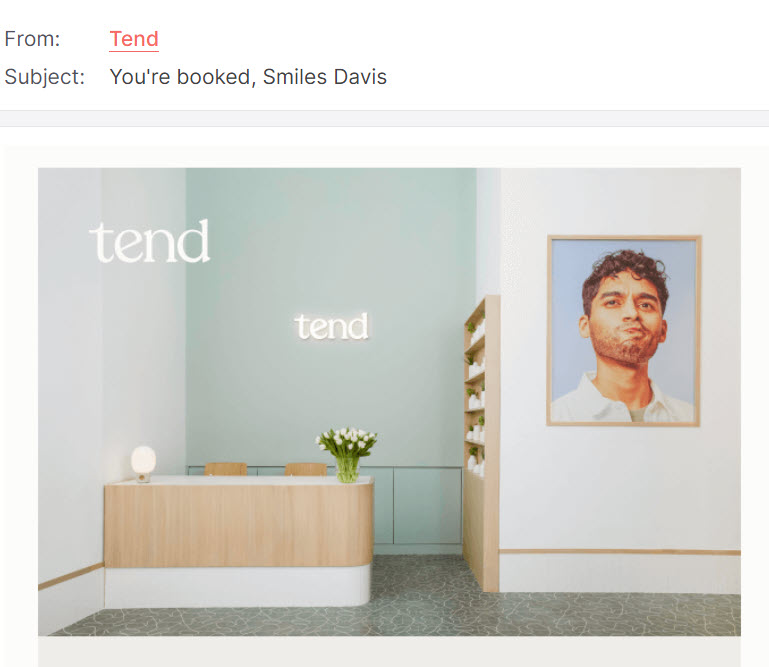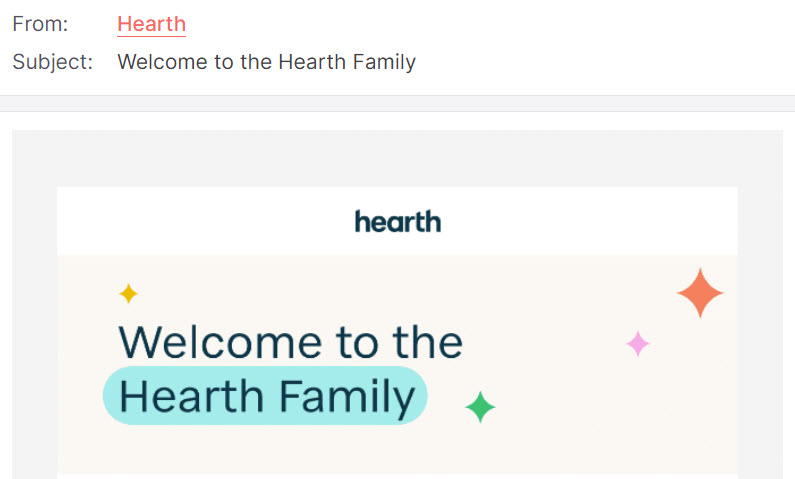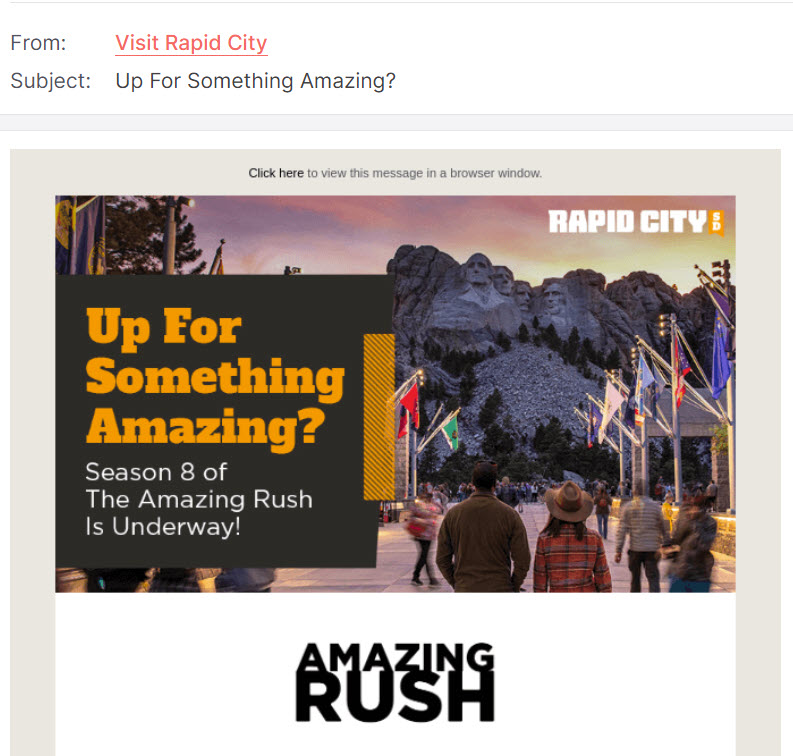
Crafting a great email subject line is an important part of building a successful email marketing campaign. The subject line is subscriber’s first encounter with your email campaign, and it’s what gets them to open it.
Without a good email subject line, your email marketing campaign could get lost in inbox! No need to worry — you’ve come to the right place to learn how to write subject lines that get your email noticed.
In this article, you’ll learn what a subject line is and why it’s important. Then, we’ll dive into how to create the best email subject lines (that get people to actually open your emails!), plus we’ll see some great email subject line examples.
What is the subject in an email?
The subject in an email is the main purpose and goal of the content. The subject line of an email supports the intention and goal of your email in the inbox. This one line of text can often determine whether an email is opened or sent straight to the trash, so ensure it’s optimized for your audience.
Spending a little extra time on your email subject lines will help you get more customers to open your emails, get your message in front of the right people, and help you avoid the spam folder. Plus, good email subject lines help lead subscribers to take the action that generates the most value for your business: click-through rate.
What makes a catchy subject line?
A catchy subject line is what will pique your subscribers’ interest and entice them to open your email. As you sit down to write your next email marketing campaign, you’ll likely ask yourself: what makes for a catchy subject line? A couple of factors influence that 40-character advertisement.
Content: With limited real estate in subscribers’ inboxes, your subject line needs to be informative and personal without giving everything away — sometimes teasing your email’s content is what will get people to open it. Whether it’s a regular newsletter, an update about a product, a confirmation, or a request for a survey, let your subscribers know what kind of value they will gain from reading your email.
Tone: Tone helps you to inject emotion into your content. Think about what sort of emotions are going to help your subscribers take action and what tone will trigger those emotions. Emails about sales might have subject lines with an urgent tone. On the flip side, emails about an upcoming product launch might be informative yet coy enough to tease the email’s content to the subscriber.
Style: Like tone, the styling of your subject line is going to inform your subscriber’s response. Credible subject lines are styled to match your brand voice and avoid spam filters. Youthful brands might lean into using emojis in their subject lines while brands geared toward a male-dominated audience might opt for fewer exclamation points.
Best Catchy email subject lines
Professional email subject lines
From expert tips to peer updates, craft email subject lines that inform subscribers about the value they stand to gain for their careers and professional advancement.
- “DC networking round-up: March update”
- “SEO best practices 2024 – download the guide”
- “Hints & tips for a better resume”
- “Learn: a new playlist went live for “Design”
- “Check out these expert tips to build better emails”
- “Bonjour! Your first class is on us”
Funny email subject lines
As the classic “Singin’ in the Rain” said: Make ‘em laugh. Use witty and humorous subject lines to get people excited to open up your email.
- “This just in: nothing – there’s nothing good in here [winky face emoji]”
- “Your fridge said you’re not being creative enough”
- “Sisterhood: we’re double-cuffing now [jeans emoji]”
- “There are not enough sticky notes on your desk”
- “The Earth’s 70% water and you’re parched”
Cold email subject lines
Cold subject lines give the information to the reader directly, no fills.
- “Discover the secret to [desired outcome]”
- “Boost your [goal] with [offered solution]”
- “Your [product/service] success starts here”
- “New insights on [relevant topic] inside”
- “Get ahead of the curve: [prospect’s industry] trends”

Welcome email subject lines
Similar to introduction email subject lines, welcome email subject lines invite subscribers into contact with your business. Welcome email subject lines should help solidify a bond between subscriber and business.
- “Thank you for joining [company name]! Here’s what we have in store for you.”
- “Welcome to [company name] – Let’s make great things happen together.”
- “Welcome [name]! Your success story begins here.”
- “Unlock endless possibilities with [company name]. Welcome aboard!”
- “You’re in! Here’s a little something from [company name] to help you get started.”

Newsletter email subject lines
Newsletter subject lines serve to intrigue readers with interesting news/valuable information.
- “Exciting updates from [company/industry]”
- “[Company name] Newsletter: Packed with insider tips and trends”
- “Get inspired: Learn from the success stories of [industry expert/customer]”
- “Just released: Our ultimate [resource/guide] to [topic]”
- “Your [month] roundup: Top [industry] insights”
Abandoned cart email subject lines
Remind your subscribers when they “accidentally” forget an item in their cart. Craft subject lines that generate a fear of missing out or even a playful guilt trip.
- “Forget something? This tote can’t fill itself”
- “You abandoned me” — what could’ve been a cute top”
- “These bath bombs are lying in wait”
- “Excuse my French, you forgot your macarons”
- “There’s ennui, and then there’s an abandoned cart”
Sales email subject lines
Sales subject lines are upfront and direct, they let the reader know the email is product/service focused.
- “Limited-time offer: save 50% on our best-selling product!”
- “Last chance to take advantage of our biggest sale of the year!”
- “Act now and receive a complimentary gift with your purchase”
- “Limited quantity alert: grab your favorite [product] before it’s gone!”
- “Just for you: enjoy a personalized [offer]”
Black Friday email subject lines
Black Friday is one of the busiest holidays of the year for most businesses. Prepare subject lines that will get your subscribers excited about upcoming sales.
- “Ready your hatchets: blockbuster deals start at midnight”
- “We’re slashing prices this season | Black Friday Deals”
- “Check out what deals are dropping at midnight”
- “Shop local this Black Friday”
- “Black Friday deals to help you ring in the holidays”
Survey email subject lines
Survey email subject lines ask recipients to provide their feedback. Make sure your audience knows you value their opinion of your business.
- “Help us serve you better! Complete our survey for a chance at [reward]”
- “Your opinion matters — take our quick survey and help us improve”
- “Your feedback matters. Share your thoughts and shape our future”
- “We’re listening! Take our survey and let your opinions be heard”
- “Your satisfaction is important to us. Share your feedback and help us excel”
Thank you email subject lines
Thank you email subject lines show gratitude, they remind your subscribers that their time, attention, and loyalty are important to a business.
- “A sincere thank you from our team”
- “Your support means the world to us”
- “A special thank you for your continued partnership”
- “Appreciating your awesomeness, [name]”
- “You’re amazing! Thank you!”
Introduction email subject lines
Introduction email subject lines should invite the recipient into conversation with your business. Let them know what value your business is going to provide the reader.
- “Introducing [company name]: Your solution to [recipient’s needs]”
- “Get acquainted with [company name]— your newest partner in [industry]”
- “Introducing [company name]. Here’s how we can help you”
- “[company name]: Your guide to [recipient’s desired outcome]”
- “[recipient’s name], meet [company name]: Your key to [industry] success”
Fundraising email subject lines
Fundraising email subject lines ask the subscriber to donate their time or money to an organization or cause. Use emotions and ethics to craft subject lines aimed at generating charitable donations.
- “Help us change lives: donate now”
- “Your gift transforms lives”
- “Unlock hope: donate today”
- “Together, we can make a difference”
- “Making a difference starts with you”
- “Empower the future: support our cause”
- “Every dollar counts: help our mission”
- “Your generosity can change the world”
- “Become a hero for our cause”
- “Changing lives, one donation at a time”
FOMO email subject lines
Fear of Missing Out, aka FOMO, is a common phenomenon — you can harness its power to help you generate opens for your email marketing campaigns.
- “Don’t miss out on tix to [insert band name]”
- “Last chance to sign up for [insert event name]”
- “Time’s ticking, download our [event name] guide to get ready”
- “Hurry! Our [name of sale] ends tonight!”
- “Adventure awaits! Book your tour now!

Events email subject lines
Event email subject lines let your audience know that your business is hosting an event and encourage them to RSVP.
- “Join us for an unforgettable evening: [event name] is almost here!”
- “Limited spots available. Register quickly for [event name]”
- “Last chance to secure your spot at [event name]—Register today”
- “Unlock new possibilities at [event name]—get your tickets now”
- “Polish your skills at [event name]: It’s an opportunity you can’t miss”
Best Practices for Email Subject Lines
The following are best practices to help you craft compelling email subject lines for your business’ marketing emails.
Grab their attention
Your email subject line should act as a mini advertisement for your content. In order to stand out in the inbox you want to instantly grab the attention of your audience — this could be through using a catchy piece of copy, including the name of the recipient in the subject line, and using pictorial additions like emojis to help separate your business’ subject line from the rest of the inbox.
Convey relevance
Email subject lines should offer information that is relevant to the recipient and give them a hint as to what content they can expect to find if they open your email. Emails meant to drive customers to a product should use subject lines that speak to the value or relevance of the product, like the importance of scheduling a check-up or a sale on shorts in the summer.
Create curiosity
As previously stated, you want to grab the attention of your audience, but you also want to make them curious. Email subject lines are short by design, you want to give the reader a taste and make them decide whether they want to invest their time in reading further.
Drive action
Think about the main goal and call to action of your email campaign. What action do you want your audience to take once they have finished reading what you have provided them? Do you want your audience to buy a product or service? Do you want them to sign up for an event? Make sure your subject line is clear about the desired action of your business.
Personalize when possible
People respond best when they feel that communication is personal and they are likely to take pause when they notice something familiar, like their own name, in the inbox. Use dynamic fields to auto-populate your subject lines with the name of the recipient.
Deep dive: Why you should personalize your marketing (and 7 ways to do it)
Keep it concise and compelling
Make sure you remember to keep your subject line concise to avoid it getting cut off in the inbox. Your subject line should be able to convey urgency, excitement, intrigue, feelings of welcomeness, or whatever the goal of your email message is in a few short words.
Use a familiar sender name
In the same vein as why people pause when they see their own name, your audience is likely to open emails that have a sender name that is familiar to them. Selecting a regularly occurring sender name to represent your business will help build trust with your audience, increasing their likelihood of opening.
Create a sense of urgency or exclusivity
Generate urgency in your subject line to capture the attention of your audience and encourage them not to wait to open your business’s email. Craft an exclusive air in your subject line to promote feelings of specialty.
Don’t use all caps
All caps can trigger readers’ instinct that the email they are looking at could be spam. Avoid using all caps when possible, and if you do decide to use all caps in your subject line keep it to one or two words.
A/B test your subject lines
In order to figure out what your audience responds to positively, consider A/B testing your subject lines. Perhaps you will write subject line A to stress urgency and subject line B to express exclusivity. Send each email test to a small group of your audience (10-20% of your total audience for each group is a good rule of thumb), determine a timeframe and analyze your results once the timeframe has passed. Whichever subject group has the highest open rate will determine which subject line you will use for the rest of your audience.
Remember to tweak
As you work on email marketing ideas for your business, remember that you’re playing a long game. Besides A/B testing your subject lines, remember to try new styles to see what works and what can be improved.
Email open, click, and bounce rate by industry
Crafting good email subject lines serves to increase value metrics and help your business achieve marketing goals. Open rates, click-through rates, and bounce rates are all influenced by the quality of your email subject lines.
Email open rate: Measurement of how many times an email has been opened by subscribers versus how many times the email has been sent.
Email click-through rate: The measurement of how many people have click a link located within an email versus the number of opens. Clicks can be counted through hyperlinked content, linked images/graphics, or linked buttons. Using a call to action (CTA), which is a line of text that directs the reader to take the business’ desired action, will help improve click-through rate.
Bounce rate: The measurement of the number of emails sent versus the number of emails delivered.
Industry averages
Want to know how your business’ emails measure against industry averages? See the full list on our KnowledgeBase.
Final thoughts on email subject lines
With these tips in mind, you’re ready to write good email subject lines that will get your emails the attention they deserve.
But don’t rely on our advice alone.
Take a look at your own inbox and see which emails you’ve been opening. Putting yourself in your contacts’ shoes is one of the best ways to write a subject line that will get you noticed and boost your business.
To see which subject lines grab your audience’s attention, try A/B testing.






